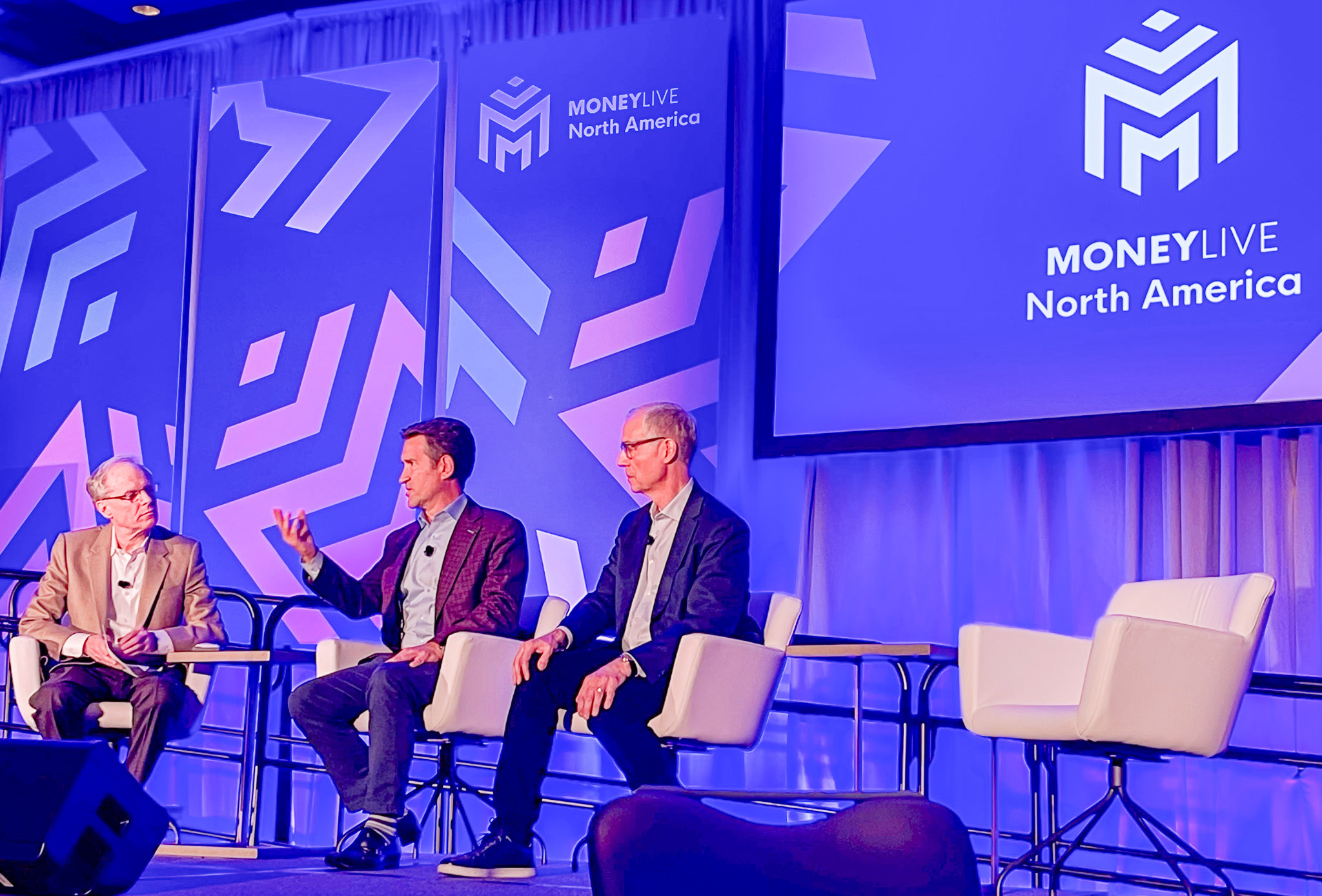
Traditional payment systems that require days-long transaction settlement, high retailer fees, and operational inefficiencies are getting a technology makeover. Led by enabling technologies like artificial intelligence and machine learning, banking, and payments services are expected to serve consumers with less friction while posing very real operational and security challenges.
These emerging technologies provided the focus of a panel held at the MoneyLive banking and payments conference in a panel moderated by David Carman, co-founder of FinTank, a fintech advisory based in Chicago.
AI and Machine Learning
Artificial intelligence and machine learning vendors seek to improve the speed and efficiency of payments. These technologies can help to detect fraud and identify patterns in customer behavior, which can help to prevent fraudulent transactions and improve the customer experience.
They can also provide a view into system operations to create efficiencies. “There’s even more innovation as it relates to blending classical data visualization techniques,” notes Corey Coscioni, a financial services executive at West Monroe, a Chicago-based consultancy. “There are so many opportunities for increased efficiency that can be gained from visualizing what’s happening within your systems today.”
As payments become faster and more complex, AI is expected to play a greater role in payments. AI and ML can be used to automate the payment process, reducing the need for manual intervention. The technology can analyze customer data and provide personalized payment solutions to customers, further improving the customer experience.
The security and soundness of the data used to train models is paramount, Coscioni warned. Know your data and how it’s stored and whether it’s maintained in your private network. Make sure that any models are transparent. “There’s invariably some level biased within your data, so you need to be aware of that,” he said.
Real-Time Payments
Real-time payments represent the biggest payments technology trend in the U.S. this year with the launch of the FedNow service this week. Unlike the most common faster payments apps used by consumers, Zelle and Venmo, FedNow will settle transactions immediately.
“This isn’t a new technology, but the Federal Reserve’s service will increase adoption of already growing technologies,” said Collin Canright, principal at Canright Communications and FinTech Rising editor.
Real-time and faster payments systems have been available since 2016 with high annual growth rates. LINK. Yet usage remains with the early adopters, not the majority of banks and businesses. In terms of Geoffrey A. Moore’s technology marketing model, real-time payments have not crossed the chasm into mainstream use.
“Consumers are used to faster everything,” Canright said. “What we expect as consumers translates directly into what customers expect in business. Payments technologies are following a similar trendline.”
Immediate payroll for gig and hourly workers has moved from ATM cards to direct deposit to immediate settlement. It will, however, be incumbent on banks and product managers to create use cases and educate their customers about the possibilities. “To paraphrase Moore, the more customers understand the technology, the more they will want the product,” Canright said.
Payments managers will also need to work through operational issues as real-time payments become increasingly common. Banks will increasingly begin handling 24/7/365 settlements. “How are you operationally going to deal with those new challenges?” Coscioni asked. “And how are you going to adjust your customer expectations?”
Contactless Payments
Real-time and faster payments aside, a frictionless payment experience is still the most important. “My favorite payment experience is the contactless payment,” Canright said. “I can slap my card on a transit kiosk, POS terminal in a retailer, or payment device at the farmer’s market, and it goes through. It’s easier than anything on my mobile.”
Contactless payments are embedded in mobile devices, debit and credit cards, and wearables.
With the COVID-19 pandemic, contactless payments became even more important, as they allow customers to make payments without risking exposure to the virus.
“Contactless payment transactions will reach $10 trillion globally by 2027; from $4.6 trillion in 2022,” estimates Juniper Research. The firm anticipates that “investment in the underlying contactless payments ecosystem, such as contactless‑enabled POS terminals and device-level support, will be the key driver of contactless transactions value growth over the next five years.”
Open Banking and APIs
Finally, the rise of open banking is also having a significant impact on the future of faster payments. Open banking allows third-party providers to access bank data and services, which can help to improve the speed and efficiency of payments. This technology has the potential to revolutionize the way we use financial services, allowing for faster, more secure transactions that are tailored to the specific needs of individual customers.
Open banking complements faster payments by allowing third-party providers to develop innovative payment solutions. The technology allows for the development of customized payment solutions that can meet the unique needs of businesses and consumers.
The U.S. Consumer Finance Protection Bureau (CFPB) has been working on regulations for open banking for some years, based on consumers’ rights to their financial data through Section 1033 of the Dodd-Frank Act. It expects to propose rules in 2023 for adoption in 2024.
Biometric Authentication
Biometric authentication can help to reduce fraud and increase the speed of transactions, as customers no longer need to input passwords or PINs to complete a payment. The technology uses unique physical characteristics, such as fingerprints, facial recognition, and voice recognition, to verify a person’s identity. Usage is growing in popularity due to its convenience and security and wide availability on mobile devices.
All of these new technologies are opening opportunities for businesses, vendors, and consumers. But they do come with security risks.
Financial organizations have to be prepared, Coscioni noted. “What defenses are either being built into your internal risks and controls? How are your vendors preparing?”


